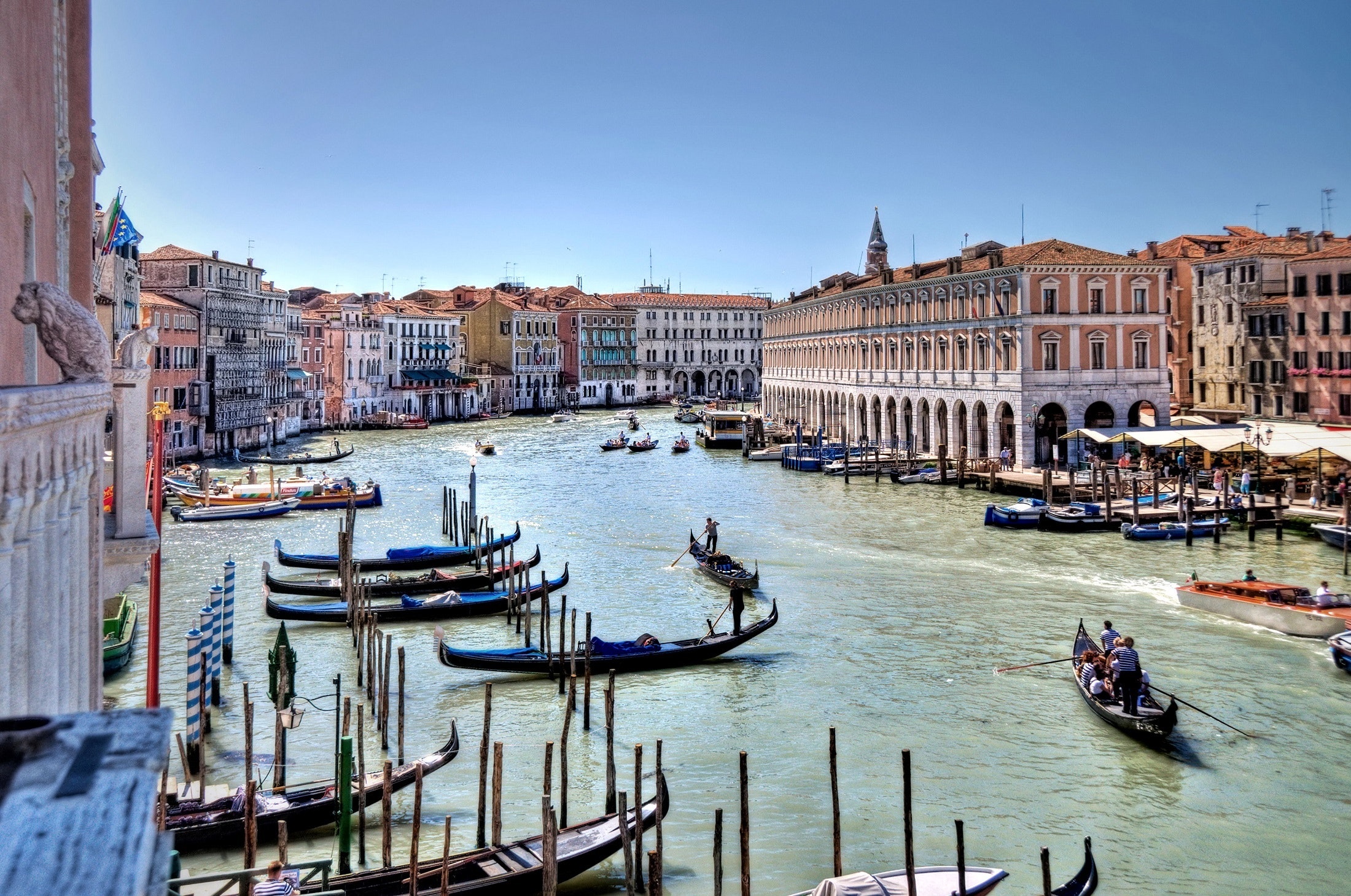A tale of three cities and international law

Last July, an international organization meeting in an Asian city took historic decisions that will influence the fate of three European cities for years to come. At its 44th session, held in Fuzhou and online, the World Heritage Committee (WHC) stripped Liverpool of its World Heritage List (WHL) title. The same day, Vienna was removed from the List of World Heritage in Danger, and Venice narrowly escaped being included in it.
Although traditionally a non-issue in international law, cities have lately gained attention among internationalists and beyond. Cities today not only play a role in international norm-making and negotiations. They are also subject to increasing normative attention from international organizations. This has influenced notions and concepts of local government law.
Less understood is a seemingly conflictive implication of this vertical relationship. While international institutions advance a global model of the “ideal city”, with specific characteristics in terms of organization, policies and relationships with national governments, cities differ from one another and exhibit unique constitutional, structural and socio-economic characters.
As Martijn Groenleer and I have argued elsewhere, in order to make sense of this apparent conflict it is possible to advance three potential responses of local governments to international law. Resistance refers to when, due to domestic constitutional factors or local opposition, local government remains largely unaffected by international norms. Accommodation indicates a situation where domestic law on local governments is incrementally adjusted to external influence, but its structural characteristics remain unaffected. Transformation is when the impact of international institutions leads to a reconceptualization of one or more structural features of city governments to embrace the global model of the “ideal city”.
The cases of the three cities and UNESCO (the United Nations Educational, Scientific and Cultural Organization) can help us elucidate these responses and their implications.
The international protection of the world cultural heritage
The existence of a world cultural heritage originated in the World Heritage Convention, a treaty signed nearly 50 years ago. Among other things, the Convention sets up the WHC, a body of elected state parties that determines which sites are added to the WHL. As Lorenzo Casini noted, this set of traditional international instruments is made operational through a global regulatory regime that includes guidelines, policies and recommendations developed by UNESCO with the technical support of the International Council on Monuments and Sites (ICOMOS), an association of international experts subject to French law.
This system has profound influence on cities’ decision-making, planning and relationships with national institutions. For instance, guidelines define in some detail how protection and management of sites should be regulated. Accordingly, when cities and national governments submit urban areas to the WHC system, they give up some of their sovereignty over these territories. Yet, each city reacts to this influence differently.
The case of Liverpool
Liverpool embodies the response of resistance to international norms – though born out of early accommodation. Back in 2004, the WHC awarded the Liverpool Maritime Mercantile City the title of World Heritage site, recognizing the importance of the city’s historic centre and architectural landmarks in the docklands during the British Empire and Industrial Revolution. Yet, the glorious past was soon confronted with today’s urban development. Liverpool Waters, a massive redevelopment of the area that included a new football stadium, got the support of the local council. This prompted immediate reactions from UNESCO and Historic England, the national agency that looks after England’s historic places. Both expressed concern that the project would permanently compromise the value of the urban landscape.
Interestingly, international soft law was employed to address the project’s impact in an objective manner. The local authority, the developer and Historic England conducted a heritage impact assessment to measure how the works would affect the area’s outstanding universal value using a methodology developed by ICOMOS for the occasion. Yet, the assessment led to conflicting results. Adding to this the fact that the UK national government can do little on city planning, the intention of local authorities to proceed with the project ultimately led to the decision to remove the site from the WHL.
In its outcome, Liverpool resembles the earlier case of Dresden, whereby frictions between international rules and local representative democracy caused the city to be removed from the WHL. One may wonder if the tension in Liverpool was truly between international institutions, on the one side, and local democracy or private interests, on the other. What is clear is that Liverpool traded its past ‘which is so exceptional as to transcend national boundaries’ for a more mundane cityscape.
Onward to Venice
Venice exemplifies the accommodation response to international norms. The problems caused by overtourism here are well known. Pre-COVID, some 25 million visitors crowded the city’s narrow alleys, and giant ships cruised its central canals. This led to rapid deterioration of the lagoon environment and residents’ living conditions. While this situation dragged on for years, UNESCO’s recommendation to place Venice on the List of World Heritage in Danger finally overcame the inertia. On 20 July 2021, the national government passed a law decree banning large cruise ships from the lagoon.
So far, national authorities have taken the easiest step to avoid the worst. International norms cannot yet be said to have produced real change in Venice. Nonetheless, there are signs that a profound rethinking of the way the city has been governed for decades is underway, triggered by international institutions. In addition to mass tourism and declining population, UNESCO has emphasized the lack of citizen involvement and poor management as reasons for concern in Venice. Accordingly, the city is taking steps to become the ‘sustainability capital of the world’. Initial plans hint at the first smart reservation system ever to cap day visitors entering the city, as well as restrictions on private apartment rentals and commercial zoning.
Whether this will come to reality, only time will tell. It will for sure require a good degree of coordination and execution. Indeed, most of the proposed measures entail the exercise of nationally reserved powers, and the plans raise questions about the city’s future accessibility and affordability.
Vienna’s transformation
Vienna is an example of the transformation of cities under international influence. Vienna’s historic centre, with its grand buildings, monuments and parks, was added to the WHL in 2001. In 2017, the city council adopted a new urban plan allowing construction of a development project (Heumarket Neu) that would include a new hotel and high-rise building next to the protected inner-city. Again, UNESCO quickly placed Vienna on the List of World Heritage in Danger.
Remarkably, the domestic reaction this time shows how international norms can deeply transform the way cities are organized and regulated. We can distinguish at least three conduits of influence. First, international norms led to a redefinition of the urban development project. The threat of being put on the endangered sites list led the city to initiate a dialogue with the developer to redesign the project in line with UNESCO and ICOMOS suggestions.
Second, international norms were incorporated into local regulations and state law. Taking UNESCO and ICOMOS guidelines into account, the city is now developing a plan for monitoring and protecting the area, as well as a programme of remedial measures to address direct and indirect threats to the site. Meanwhile, the federal government is taking steps to strengthen the preservation of World Heritage sites in national law.
Third, international norms have been used to interpret how city administration should protect the area. The Federal Administrative Court ruled that the Heumarket project must undergo an environmental impact assessment (EIA), albeit not involving the construction of any facility and its surface not reaching the threshold value stipulated in the Austrian law implementing Directive 2014/52/EU. The judges argued that what is relevant is the protective purpose of the EIA on a UNESCO-protected area that is significantly compromised by the construction of a 66-metre tower, which rules out any margin of appreciation by the national authority.
Overall, a deep transformation of the city’s legal ecosystem, clearly involving a great deal of coordination and acceptance, was necessary to remove Vienna from the List of World Heritage in Danger.
Cities in international law today
These three cases offer an interesting glimpse of the city as a complex entity with unique dynamics and powers that deserve greater attention and understanding, including among internationalists. International law can profoundly influence cities and their legal ecosystem. The strings attached to the guidelines and recommendations developed by UNESCO, for example, can deeply influence city governments and their instruments. However, when differences are too great, the normative activity of the international organizations can clash with the internal dynamics or legal constraints of the concerned cities and end up being rejected. Meanwhile, feedback loops connecting the local to the international level can lead international decision-making to develop new instruments and decisions addressing typical urban problems.
| Originally published on EJIL:Talk! More blogs on Law Blogs Maastricht |
-
 C.M. ColomboMore articles from C.M. Colombo
C.M. ColomboMore articles from C.M. ColomboCarlo Colombo is Assistant Professor of Administrative Law at the Department of Public Law of Maastricht University. He currently co-coordinates a course on “Comparative Administrative Law” offered by the bachelor European Law School of Maastricht University and also coordinates and teaches a course on "Law and Cities in Ecological Transition" at the Governing Ecological Transitions in European Cities Master’s Programme at Sciences Po Paris (FR).
Other blogs:
Also read
-
Some conducts encountered in digital markets, e.g. killer acquisitions, self-promotion and marketing strategies, non-transparent and discriminatory interfaces, signify a need for ex ante regulation, as widely acknowledged. The European Commission, UK Government and US Senators proposed legislative...
-
Representing the prototype of multi-sided platforms, app stores are at the forefront of the debate on digital markets. Several regulatory proposals place on app stores neutrality obligations vis-à-vis third parties. Are EU and US competition laws utterly unfit to tackle platform-related behaviours...
-
As Big Tech Platforms increasingly become unavoidable actors in digital markets, there seems to be a consensus in the EU, UK and USA that legislative action must be taken to tame their power. However, there are several notable differences in the way in which they suggest to design this regulatory...


